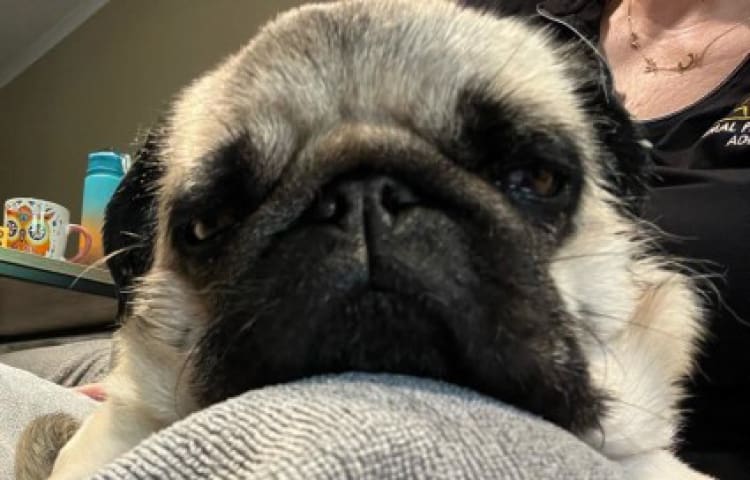10 common pet health issues in Australia (and how to prevent them)
Learn 10 common pet health issues in Australia and how to keep your pet healthy and protected.
Read more23 May 2025
Zero, a 7-year-old male Pug, had been scuffing his front paws and displaying a unique “prancing” walk since he was a puppy. While initially endearing and pain-free, his behaviour changed over the past year. He began lashing out at his pug brother when startled, even reacting aggressively upon suddenly waking up. Concerned about this shift, Zero’s owner sought veterinary advice from a specialist neurologist.
An MRI confirmed that Zero had intervertebral disc disease (IVDD) at three levels in his cervical, thoracic, and lumbar spine. IVDD is a common degenerative spinal condition in Pugs and other chondrodystrophic breeds, where the spinal discs deteriorate and can protrude, causing pain and compression on the spinal cord and nerves. This condition can range from mild pain and incoordination (ataxia) to complete paralysis.
Pugs may be predisposed to IVDD due to their short legs and long backs, making them more susceptible to spinal disc degeneration. IVDD can occur at multiple locations along the spine and may present with a variety of symptoms, including:
• Spinal pain
• Abnormal posture (such as a rounded back or low head carriage)
• Reluctance to move or exercise
• Crying when moving
• Loss of coordination
• Weakness or paralysis
• Lameness
• Faecal or urinary incontinence
• Loss of sensation in the legs

Early detection of IVDD is crucial, as it can allow for treatment without surgery in some cases. While severe IVDD may require surgical intervention, physiotherapy can play a vital role in managing pain, strengthening muscles around the spine, and improving coordination to reduce ataxia. Physiotherapy aims to rehabilitate affected limbs, retrain proprioception, and prevent further deterioration of the condition.
After his diagnosis, Zero’s owners turned to physiotherapy for support. Under the guidance of an Australian Physiotherapy Association (APA) physiotherapist, Zero’s treatment included:
• Manual therapy and massage
• Laser therapy
• A structured rehabilitation exercise program carried out diligently by his owners
As a result of this non-surgical approach, Zero is now comfortable, pain-free, and able to enjoy steady walks. His behaviour has also improved. He no longer reacts aggressively when cuddling with his brother. With continued rehabilitation, his owners hope to prevent the need for costly spinal surgery in the future.
Petcover refers patients to the Australian Physiotherapy Association as our preferred provider for veterinary physiotherapy. We cover physiotherapy under eligible vet fees within our dog insurance policies. Whether your dog requires post-surgical rehabilitation or physiotherapy to slow the progression of a condition like IVDD, Petcover can provide financial support.
For the best cover, insuring your pet from 8 weeks of age ensures they are protected for life against new conditions. To learn more about our policies and levels of support for your furry family member, contact our Petcover Pet Insurance Specialist team today.
To find your nearest Australian Physiotherapy Association location, visit our APA directory.
*Policy terms and conditions apply.
APA Directory